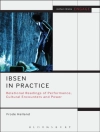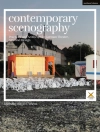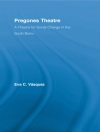Ecocritical takes on popular film.
Ecology and Popular Film examines representations of nature in mainstream film while also looking at film itself as a form of nature writing. Considering a selection of mainstream movies that embrace a wide variety of environmental themes, from the Lumières’ Oil Wells of Baku (1896) to Al Gore’s An Inconvenient Truth (2006), Murray and Heumann explore such themes as environmental politics, eco-terrorism, ecology and home, tragic and comic eco-heroes, the spectacular, and evolutionary narrative, in a manner that is both accessible and fun. Other films discussed include The River (1937), Soylent Green (1971), Pale Rider (1985), 28 Days Later (2002), and The Day After Tomorrow (2004). The book also includes a comprehensive filmography of films that deal with environmental themes and issues.
Зміст
List of Illustrations
Acknowledgments
Introduction: Reading the Environment in Popular Cinema
1. Ecology and Spectacle in Oil Wells of Baku: Close View: The First Eco-Disaster Film?
2. Environmental Politics: Pare Lorentz’s The River and the Tennessee Valley Authority
3. Reconstructing Underground Urban Space in Dark Days
4. Ecology, Place, and Home in Dark City: Is It Our Nature to Live in the Dark?
5. Environmental Nostalgia and The Tragic Eco-Hero: The Case of Soylent Green and the 1970s Eco-Disaster Film
6. The Comic Eco-Hero: Spoofing Eco-Disaster in Eight Legged Freaks
7. Eco-Terrorism in Film: Pale Rider and the Revenge Cycle
8. Car Culture and the Transformation of the American Landscape in The Fast and the Furious
9. Film Ecology: Simulated Construction and Destruction in Hooper
10. Apocalypse as a ‘Return to Normality’ in 28 Days Later and 28 Weeks Later
Conclusion: Al Gore’s An Inconvenient Truth and its Skeptics: A Case of Environmental Nostalgia
Filmography
Works Cited
Index
Про автора
At Eastern Illinois University, Robin L. Murray is Professor of English and Joseph K. Heumann is Professor of Communication Studies.












